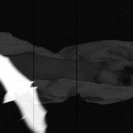‘Aura hysterica: the sensation of an acidic burning in all the limbs, twisted and almost raw muscles; the feeling of being glass like and breakable; a fear; a retreat from movement; an unconscious confusion of gait, gestures, and movements; a will perpetually straining to perform even the simplest gestures; the renunciation of the simple gesture; an astonishing, central fatigue, a kind of dead tiredness; the sensation of a wave…’ Georges Didi-Huberman, Invention of Hysteria
The single channel work, Something Which Does Not Show Itself alludes to the nineteenth century development of chronophotography and its attempt to capture the process of neurological damage, in stark contrast to contemporary MRI technology that seeks to capture the invisible. However, it should also be noted that chronophotography and its frame-by-frame instances of movement was a direct precursor to cinematic movement. What is interesting and different about chronophotography was that it often attempted to output the flow of movement instances back into the one frame. In a sense, this compression of movement confuses its start and end points, rendering it more as an ‘in-between’ or processural state.
In Something, a dismembered image of a hand and forearm are encased in a white sheet. The hand twitches randomly and is attempting to move and grasp an object. It loops but the hand has not completed its task – if, in fact, there was a task. Here, nothing moves, in a sense except that the rhythm of the loop is propelled forward by the inter-cutting of a camera shutter opening and closing. Nothing happens in this piece but neurological damage is being experienced.
Text by Uros Cvoro in Broadsheet
Exhibition History: 5×5 Ivan Dougherty Gallery, Sydney, May 2008







